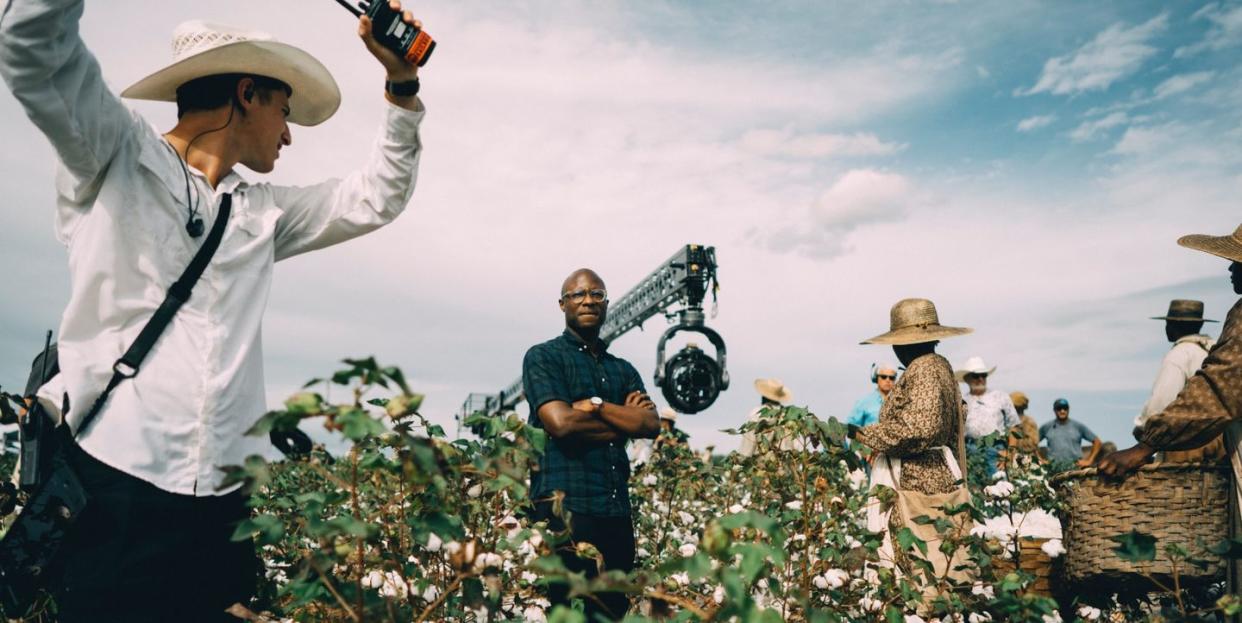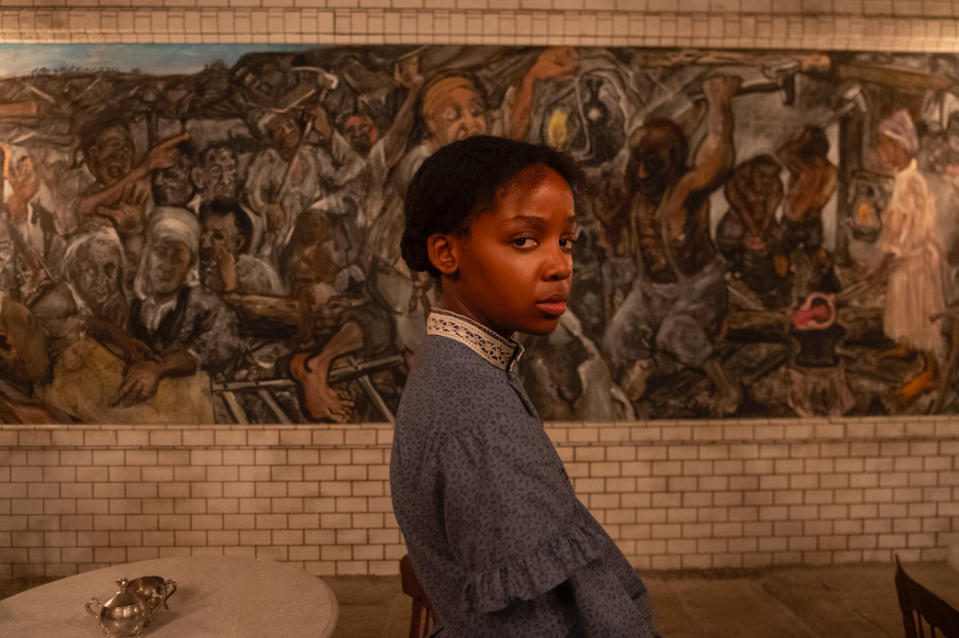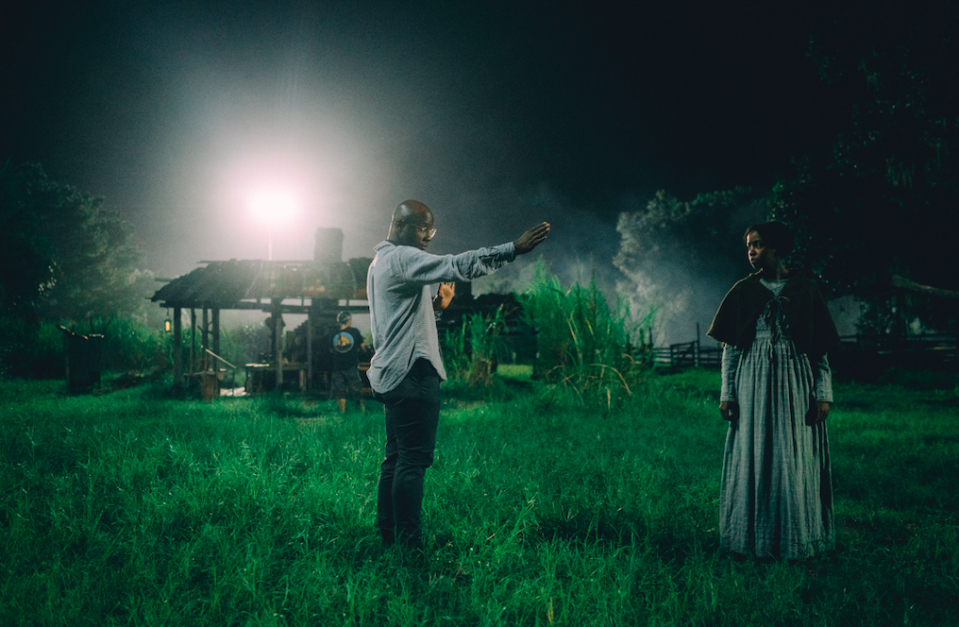The true story behind The Underground Railroad

In the novel The Underground Railroad, author Colson Whitehead ingeniously makes literal the metaphorical network of the Underground Railroad, the 19th century network of clandestine channels and safe houses created by abolitionists to help free enslaved people from the Deep South into the free states of the North.
Whitehead's figurative, fantasy railroad features an underground platform accessed through a trapdoor, an elusive, dilapidated box car being pulled across subterranean tracks by a steam locomotive, and a semi-mythic conductor on board.
Oscar winner Barry Jenkins, director of Moonlight, is now bringing Whitehead's brilliant concept to our small screens, adapting the Pulitzer Prize-winning novel into a sprawling 10-part drama for Amazon. The story follows the epic journey of resilient heroine Cora (played by Thuso Mbedu), a young enslaved girl who escapes a plantation and uncovers the underground railway, stopping off on the steam locomotive at various hazardous Southern States in a desperate a bid for freedom.

Like her ancestors, Cora has been born into slavery, emerging from her mother's womb as the property of a brutal plantation in Georgia, run by its violent and pernicious owner named Randall.
Travelling across South Carolina, North Carolina, Tennessee, and Indiana, Cora arrives at one state which appears to be easing Black people into their community, while covertly mutilating some of the formerly enslaved women, and discovers that in another, only whites are permitted to live.
All the while, Cora is being pursued by a relentless slave catcher called Ridgeway (played by Joel Edgerton), calculating to 'return' Cora back to the plantation from where she fled.

Although the first episode of The Underground Railroad features graphic and violent depictions of torture and punishment, Jenkins is said to have softened Whitehead's pages soaked in trauma and brutality, so as to avoid making something exploitative or triggering for viewers.
"This is the most triggering material I've ever had to wrestle with," Jenkins told The Observer recently. "There's a great responsibility that comes with that. I hope it can re-contextualise rather than reinforce stereotypes about my ancestors that have been allowed to persist over the decades."
The true story of the Underground Railroad
Opposition to slavery began to deepen in the early 1800s, and so empathetic parties began to develop and organise a secret network to help guide enslaved people out of the Deep South and into the free states of North - or for those who didn't trust America - into free Canada. The network is estimated to have enabled over 100,000 people to escape slavery (BBC).
The Railroad is believed to have been most active between 1810 and the start of the Civil War in 1862, and the network consisted of "conductors", the people who guided fugitive people on the run, and "stationmasters", those who hid the absconders in schoolhouses or in their homes, which were code named "stations", "safe houses", and "depots".
Most of the operators led ordinary lives as farmers, teachers, business owners or ministers - not all were openly abolitionists, particularly in the earlier days.

Harriet Tubman, the abolitionist and political activist, is considered the most famous conductor of the Underground Railroad. Born into slavery, Tubman escaped a plantation in Maryland in 1849, only to return several times to rescue others. Revered as "The Moses of Her People", Tubman relocated to Pennsylvania but went back to the South on at least 19 occasions and helped over 300 fugitives flee to freedom (BBC).
Colson Whitehead explains the origin of Underground Railroad, and how it inspired the premise for his award-winning novel. "While slavery was horrible and people were always running away, around the 1840s there became a more organised form of resistance," Whitehead told BBC Radio Four. "People who would help slaves go north by giving them passage on ships, in the back of their wagons, giving them money, hiding them, helping them get across rivers, and it became known as the Underground Railroad, because people would disappear and masters would never see them again, and then someone said, 'it's like so and so disappeared on an underground railroad.'
"The underground railroad was not a literal network - it was a social network of people helping out. It became the term of choice for this network of people, and some people who were never taught the right thing still think it was a literal railroad beneath the earth, but it seemed that that would be a kooky, interesting premise for a book, if there was an actual network beneath the earth, beneath America and a slave used it to go North."

This "social network of people" was imperative to helping enslaved people escape but they also had to depend on their own cunning, luck and circumstance to successfully flee, often plotting their getaway at night with the North Star their only source of guidance.
The Fugitive Slave Act
This act, first passed in 1793 in the Deep South, permitted local governments to "apprehend and extradite recapture and return escapees from within the borders of free states back to their point of origin" (History).
Slave owners imposed penalties for those who attempted to aid their escape. This act spawned a lucrative business for bounty hunters-turned-slave-catchers, much like the sadistic Ridgeway in Whitehead's novel, who tries to capture Cora and return her to a plantation in Georgia.
Vigilance Committees were formed in the 1840s in New York and Philadelphia to protect escaped enslaved people from bounty hunters, who would even kidnap free men and women off the street in the South and sell them into slavery.
The Fugitive Slave Act of 1850 was introduced to reinforce the previous law, which people in Southern States didn't believe was adequately enforced. As a result, many escapees headed to Canada, which offered Black people basic human rights. Some Underground Railroad conductors relocated to Canada to welcome and help the escapees settle in. By the mid 1800s, the Underground Railroad was an overt operation fully recognised across America.
In 1863, Abraham Lincoln issued the Emancipation Proclamation, which declared that "that all persons held as slaves" within the rebellious states "are, and henceforward shall be free". The underground railroad had stopped operating around this time, and its work came above ground to become a visible part of the Union effort against the Confederacy. Tubman played an integral role as she led intelligence operations and carried out a command role in Union Army operations - becoming the first woman in US history to lead a military expedition - to rescue the newly liberated enslaved people (The National Geographic).

Barry Jenkins filmed The Underground Railroad while Donald Trump was still in power, and has spoken about how the slogan 'Make America Great Again' reinforced how important it was to get his series made, and for people to finally acknowledge this dark part of America's history.
"Slavery is a history that we don't want to acknowledge because of the shame and the trauma of it," Jenkins said. "It's almost something America wants to deny, and so this show is an opportunity to see people as they were. This project happened over a time when 'Make America Great Again' was the slogan. We filmed in Georgia - you could see all those red hats all the time.
"And part of the impetus behind the show is there's got to be some kind of vacuum or cavity, because if you can say 'Make America Great Again', you clearly haven't acknowledged what America once and always was."
The Underground Railroad is available to stream on Amazon on Friday, 14th May.
In need of some at-home inspiration? Sign up to our free weekly newsletter for skincare and self-care, the latest cultural hits to read and download, and the little luxuries that make staying in so much more satisfying.
Plus, sign up here to get Harper’s Bazaar magazine delivered straight to your door.
You Might Also Like


